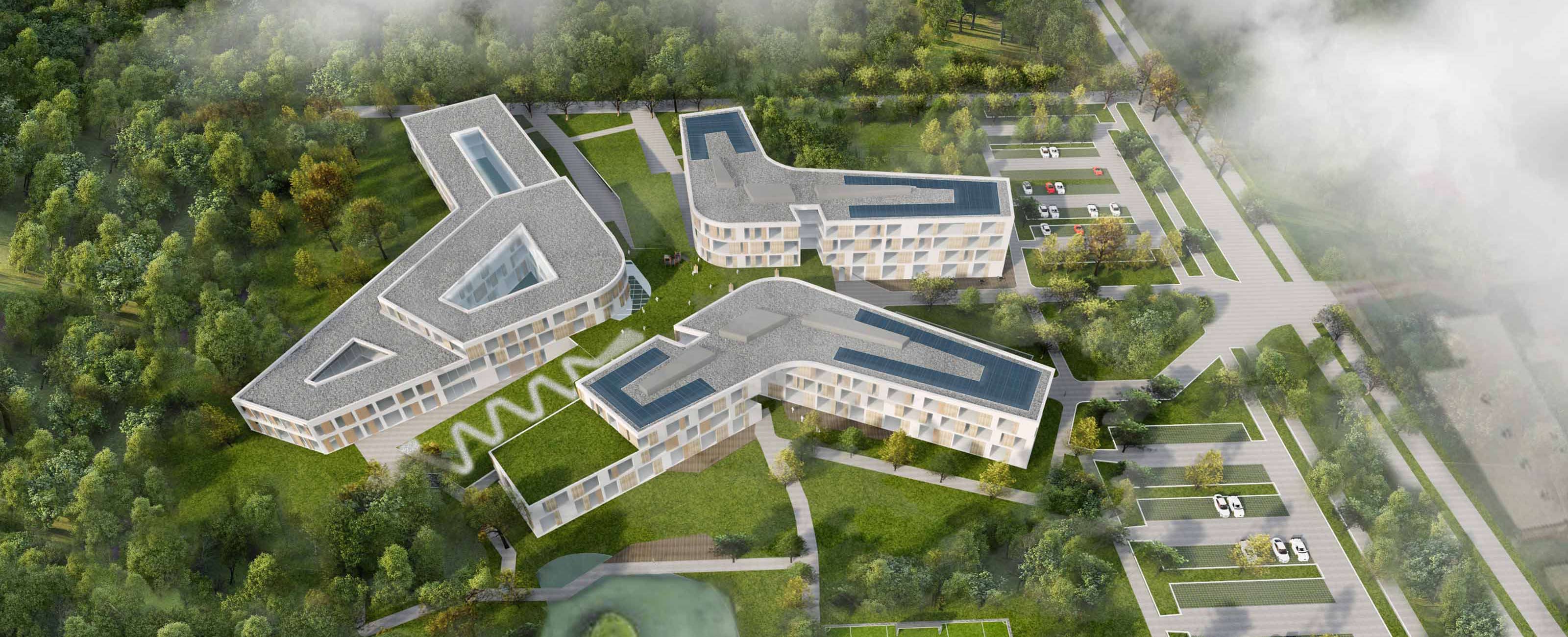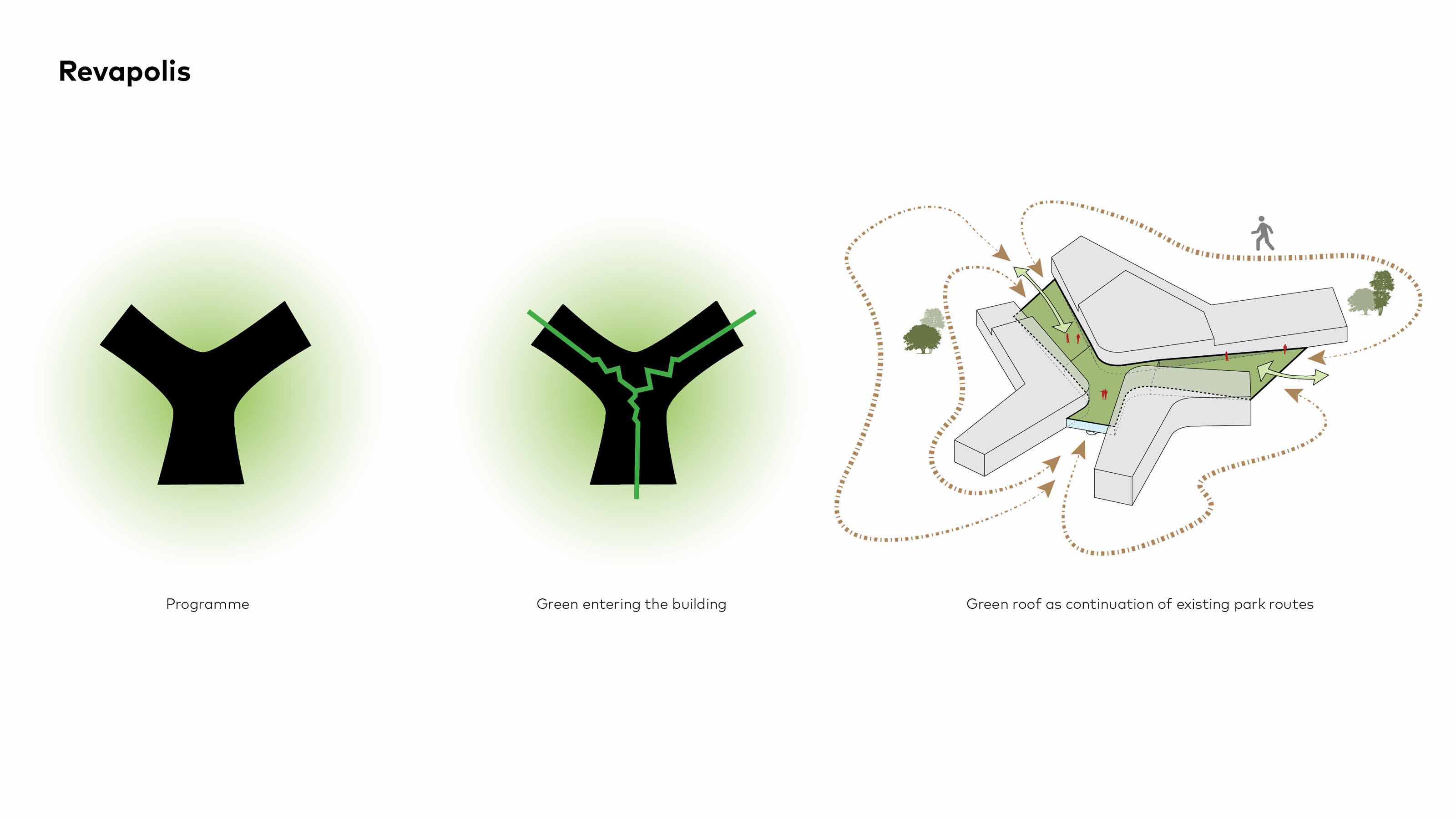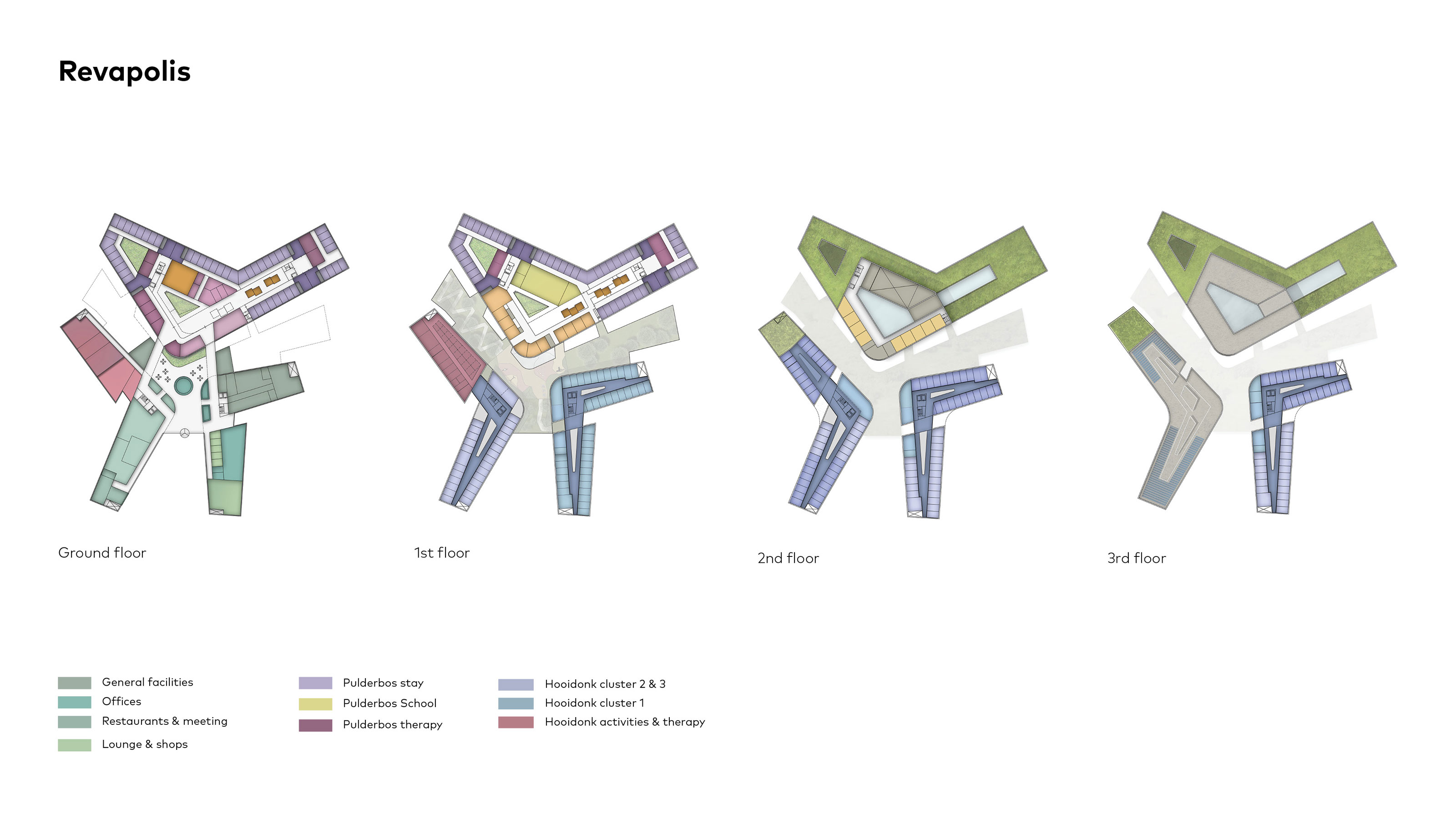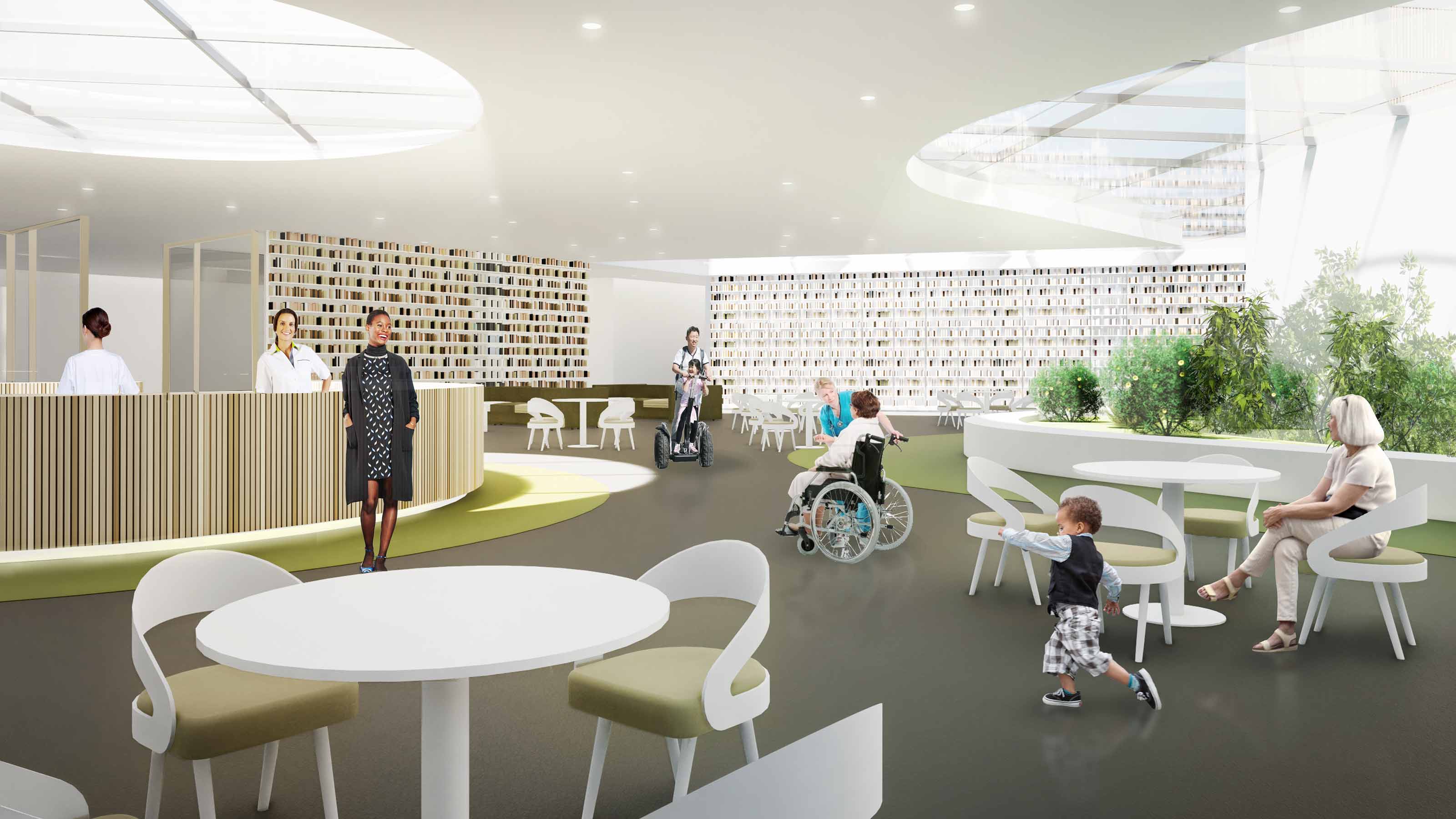Revalidation campus for children and adults
The new Revapolis is an oasis of calm where young and old, residents, visitors, staff and locals can recharge their batteries
The Revapolis Campus in Zandhoven in Belgium is an initiative of Hooidonk and Pulderbos residential care home, a revalidation centre for children and young people. The two institutions have teamed up to form a large knowledge centre for revalidation and recuperation. EGM drew up a vision for a shared campus where both organizations can feel at home and respect each other’s identity, and where the sharing of knowledge and facilities can be optimally supported
A village square as central meeting point
Working and living with and among children who are recuperating is different to caring for adults and seniors. These two worlds are not the same, but there are plenty of similarities, such as the aim to recover and re-enter society. The design vision by EGM brings the two worlds together.
The design for Revapolis consists of a compact arrangement of three volumes, which open invitingly to the landscape. A central entrance area, the village square, connects the volumes to each other at ground level. The square offers access to public areas such as the restaurant, lounge and shops, as well as to special functions within the complex, such as the school and therapy spaces.
Optimal connected to its environment
The division of the large programme into separate volumes creates a pleasant scale inside and outside the building. The limited height of the building ensures optimal contact with the surroundings from the various spaces.
To ensure that as many age groups and departments as possible, as well as the school, have easy access to the ground level, the landscape between the three volumes is tilted up. This ‘intervention’ maximizes contact between the building and landscape. The height difference adds another dimension to the perception of the location: from the wheelchair you look out over the people in front of you. This illustrates how the complex is designed from the perspective of people who live with a disability, or who are recuperating.
Natural transition to the park
The character of the campus is determined by the many interesting and exciting spaces and the flowing transitions to the park. Spaces that either stimulate, thus promoting recovery, or are calming. The spaciousness, the abundant daylight, and the views of nature create a relaxed atmosphere. People feel the freedom to move. Corridors are almost totally absent in the public domain. The medical areas are incorporated into the complex in a natural manner: easy to find, but certainly not dominant when it comes to determining the mood. The building and surroundings invite discovery and offer sufficient space and variation to move around and find places to be alone for a while or to spend time with family.
Comprehensible logistical circuits
The complex is functional in layout. It supports an efficient work organization by creating short walking lines for staff and clear logistical circuits that do not disturb the primary work processes and the experience. The various areas are designed in such a way that they will be easy to adapt in the future if and when the spatial needs of the organizations change.
Moreover, in the public areas freely accessible to visitors and occupants, the sense of space ensures good orientation. For this reason, people find their destination intuitively, just as they can orientate themselves in a town or village. The spatial experience is always varied and is supported by daylight and views. The new Revapolis is an oasis of calm where young and old, residents, visitors, staff and locals can recharge their batteries.








